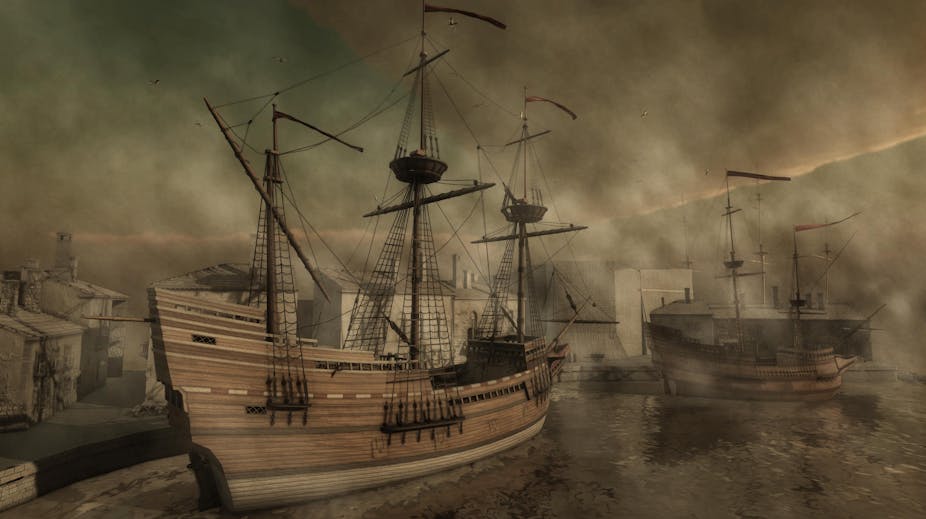Community, Leadership, Experimentation, Diversity, & Education
Pittsburgh Arts, Regional Theatre, New Work, Producing, Copyright, Labor Unions,
New Products, Coping Skills, J-O-Bs...
Theatre industry news, University & School of Drama Announcements, plus occasional course support for
Carnegie Mellon School of Drama Faculty, Staff, Students, and Alumni.
CMU School of Drama
Wednesday, September 23, 2020
Mayflower 400: how we brought the pilgrims' ship to life using VR technology
theconversation.com: It’s almost impossible, 400 years later, to imagine the scene in September 1620, when groups of English Puritans took their last look at the land of their birth while descending a few damp, slippery steps in Sutton Pool (today, the Barbican), Plymouth. How they felt while being ferried out to the Mayflower, a cramped, creaking square-rigged merchant ship, moored outside the harbour – and what they thought of the vessel, with its basic facilities and cargo.
Subscribe to:
Post Comments (Atom)

2 comments:
I am fascinated by the future of VR technology and the various ways it can be utilized. There are so many different routes that people are taking with VR and it is impossible to imagine all the ways that VR will become part of our everyday lives in the future. Someone I know is developing a VR company that will help students with special needs to receive additional services at home during remote learning. Clearly there is a potential to use VR in a variety of ways that can increase accessibility and availability. A replication of the Mayflower is not far from where I live, and I remember when touring it taking note of how inaccessible it would be for anyone with a physical disability. While it seems this specific project is mostly for historical learning purposes, I think there are so many positive unintended consequences that could change the future of museum visiting and historical site touring.
Being able to preserve a major part of American history is impressive. More like recreate, but it comes to prove just how much technology has advanced. When MOCAP was first introduced it was this massive deal and then it kind of died down but not completely. With better adjustments, it is quite pleasing looking at the kind of projects that are produced today with the medium. As a history person myself, I appreciate greatly the work they have put out. It also comments on something I have mentioned in the past and will continue to mention: there are jobs in creative careers. I know that MOCAP actors – who were likely utilized for the people in the VR videos – develop skills specific to the medium. The nature of it consists of putting on what is basically a glorified onesie or tight clothing while doing very specific and almost unnatural movements. I have been able to see work done in video and it is truly amazing what they can accomplish with very brief and vague prompts on the work they should do.
Post a Comment